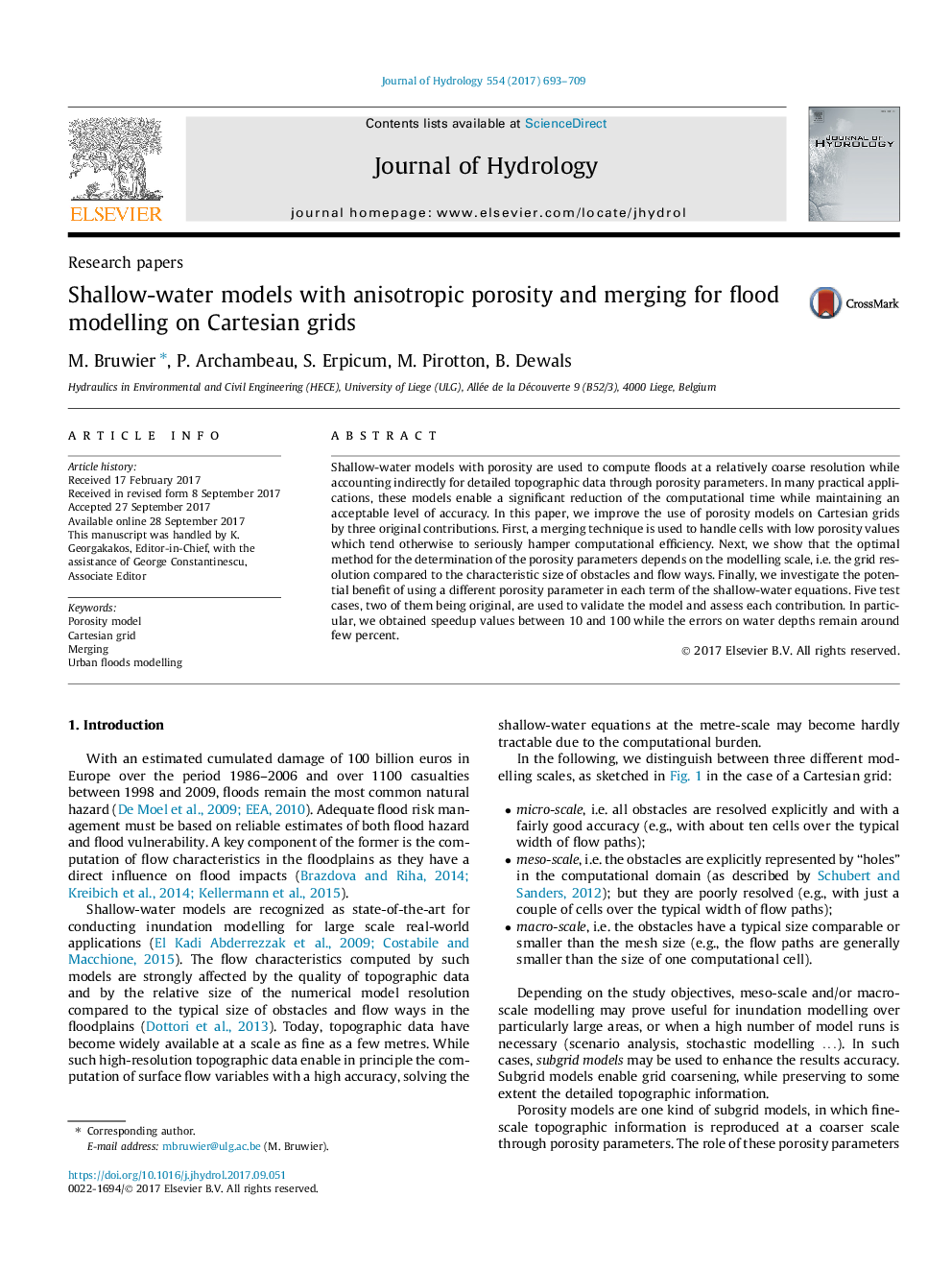| Article ID | Journal | Published Year | Pages | File Type |
|---|---|---|---|---|
| 5771129 | Journal of Hydrology | 2017 | 17 Pages |
â¢Using Cartesian grids, we apply the porosity model for a wide range of modelling scales.â¢We introduce a merging technique to preserve computational efficiency in the presence of low values of the storage porosity.â¢We compare different methods to determine the conveyance porosity parameters.â¢We explore the use of distinct porosity parameters for each term of the governing equations.
Shallow-water models with porosity are used to compute floods at a relatively coarse resolution while accounting indirectly for detailed topographic data through porosity parameters. In many practical applications, these models enable a significant reduction of the computational time while maintaining an acceptable level of accuracy. In this paper, we improve the use of porosity models on Cartesian grids by three original contributions. First, a merging technique is used to handle cells with low porosity values which tend otherwise to seriously hamper computational efficiency. Next, we show that the optimal method for the determination of the porosity parameters depends on the modelling scale, i.e. the grid resolution compared to the characteristic size of obstacles and flow ways. Finally, we investigate the potential benefit of using a different porosity parameter in each term of the shallow-water equations. Five test cases, two of them being original, are used to validate the model and assess each contribution. In particular, we obtained speedup values between 10 and 100 while the errors on water depths remain around few percent.
